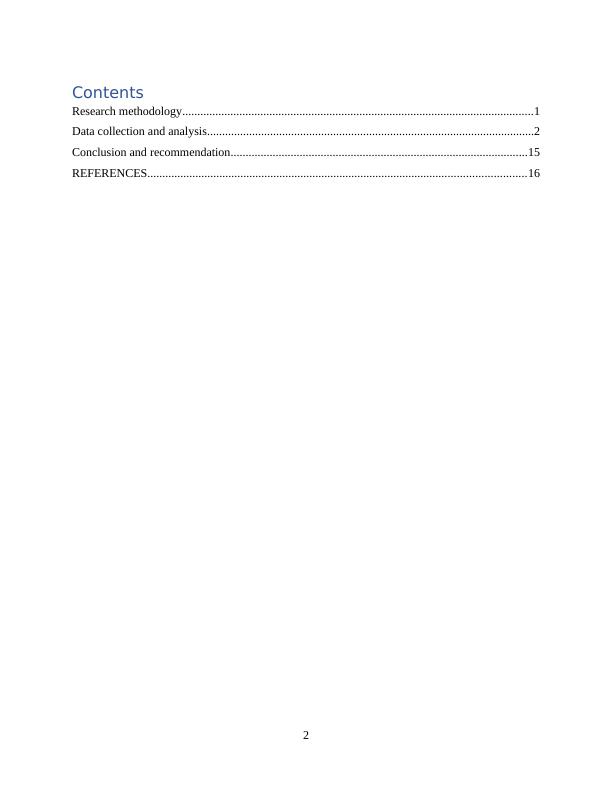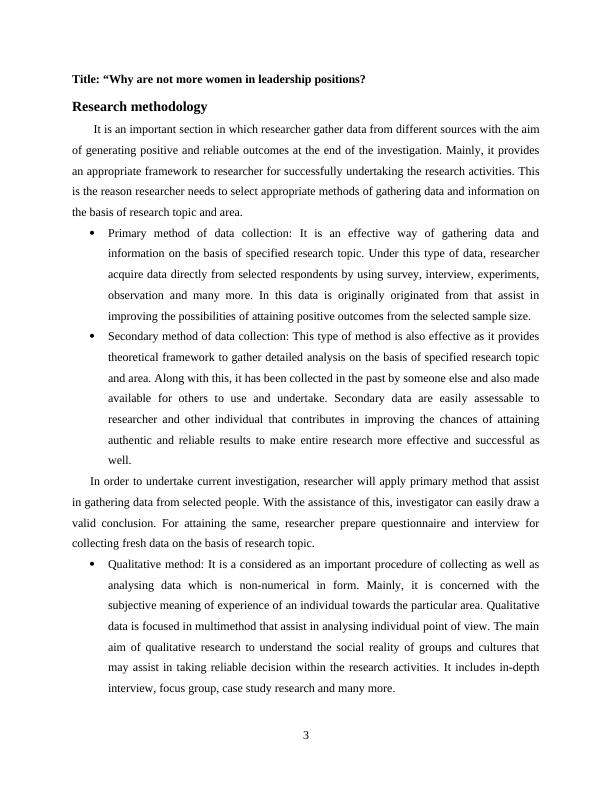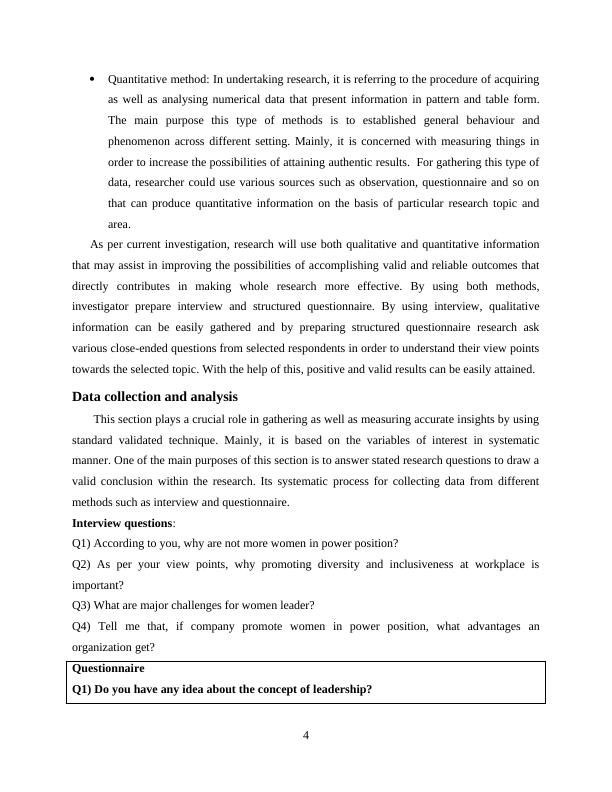Why are not more women in leadership positions?
19 Pages3496 Words90 Views
Added on 2023-01-04
About This Document
This article discusses the reasons behind the lack of women in leadership positions and explores the impact of diversity and inclusiveness on women's power position in the workplace. It also examines the research methodology used and provides insights from data collection and analysis.
Why are not more women in leadership positions?
Added on 2023-01-04
ShareRelated Documents
End of preview
Want to access all the pages? Upload your documents or become a member.
Critical reflections of ethical issues
|6
|1343
|66
The impact of Brexit on UK business
|8
|2534
|74
Define Research
|6
|829
|37
Relationship between Leadership Strategies and Inter-organisational Network
|17
|3405
|85
Critical Reflections of Ethical Issues
|11
|2591
|393
Types of Research, Comparison between Quantitative & Qualitative Research, Advantages and Disadvantages of Data Collection Methods
|6
|776
|29




